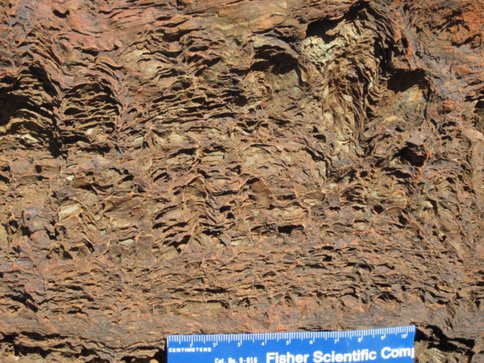2015 Annual Science Report
 Massachusetts Institute of Technology
Reporting | JAN 2015 – DEC 2015
Massachusetts Institute of Technology
Reporting | JAN 2015 – DEC 2015
Evolution of Precambrian Life and Primary Producers
Project Summary
Life on Earth is sustained by photosynthesis, both on land and in the sea. New research provides novel perspectives on the evolution of diatoms, responsible for 25% of all photosynthesis in today’s oceans. Also, new fossils from Russia strengthen the relationship between early eukaryotes and environmental conditions in Proterozoic oceans.
Project Progress
Research in this area focused on three distinct projects. The first, led by MIT postdocotral fellow, Benjamin Kotrc, completed long term research on the evolution of diatoms, among Earth’s most abundant primary producers. Morphospace analysis corroborates the hypothesis that diatoms achieved most of their present day structural variety early in their evolutionary history and also shows that morphospace studies can be influneced by sampling insentisty, just as tabulations of species richness can (Kotrc and Knoll, 2015, a b, c).
In the second, we completed research on well preserved microfossils from ca. 1500 million year old rocks in Russia. Samples of carbonaceous shale from the Kaltasy Formation were collected from drill cores and processed in the lab for microfossils. Abundant and well preserved microfossils document 34 distinct biological entities (Figure 1), including some problematic eukaryotes. Ornamented microfossils found in coastal successions of other lower Mesoproterozoic basins are absent, but large filamentous microfossils interpreted as possible benthic photosynthetic eukaryotes are recorded, drawing comparisons to relatively deep water shales in Siberia. In overall aspect, the Kaltasy microfossils are consistent with other broadly co-eval assemblages, but they highlight the importance of environment, as well as age, in determining the distributions of remains that record the early diversification of marine eukaryotes (Sergeev et al., 2015; a second, monogrpahic paper is currently in review).
In the third, we completed field-based research, conducted with members of the Australian Centre for Astrobiology, on ca. 2400 million year old carbonates from northwestern Australia (Figure 2), documenting distinctive stromatolite morphlogies at a time of large-scale environmental change — the Great Oxygenation Event.
Finally, we contributed two reviews, one of early microbial evolution (Knoll, 2015) and one discussing the evolution of biomineralization by protists and its biogeochemical consequences (Knoll and Kotrc, 2015)
Publications
-
Knoll, A. H., & Kotrc, B. (2015). Protistan Skeletons: A Geologic History of Evolution and Constraint. Evolution of Lightweight Structures, None, 1–16. doi:10.1007/978-94-017-9398-8_1
-
Kotrc, B., & Knoll, A. H. (2015). A morphospace of planktonic marine diatoms. I. Two views of disparity through time. Paleobiology, 41(01), 45–67. doi:10.1017/pab.2014.4
-
Kotrc, B., & Knoll, A. H. (2015). A morphospace of planktonic marine diatoms. II. Sampling standardization and spatial disparity partitioning. Paleobiology, 41(01), 68–88. doi:10.1017/pab.2014.5
-
Kotrc, B., & Knoll, A. H. (2015). Morphospaces and Databases: Diatom Diversification through Time. Evolution of Lightweight Structures, None, 17–37. doi:10.1007/978-94-017-9398-8_2
-
PROJECT INVESTIGATORS:
-
PROJECT MEMBERS:
Benjamin Kotrc
Co-Investigator
Francis Macdonald
Co-Investigator
Rowan Martindale
Collaborator
Vladimir Sergeev
Collaborator
Justin Strauss
Collaborator
Roger Summons
Collaborator
Malcolm Walter
Collaborator
-
RELATED OBJECTIVES:
Objective 4.1
Earth's early biosphere.
Objective 4.2
Production of complex life.
Objective 6.1
Effects of environmental changes on microbial ecosystems


